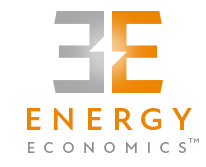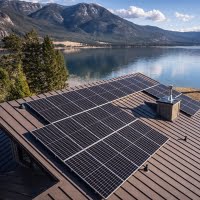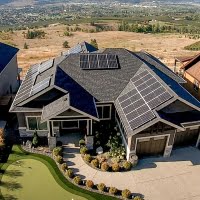MICROGRIDS ARE THE FUTURE OF ENERGY
We believe energy is one of the most essential currencies in the world today and microgrids are the future of energy! A relatively new technology, they can provide power for small areas. They use solar panels, wind turbines or combined heat & power to produce clean energy and then store it in batteries so they never run out! Microgrids with electric vehicle charging stations are also becoming increasingly common. They’re a self-sufficient system that serves an area, such as universities, hospitals, business locations and apartment complexes and can store excess power for when you need it most!
Microgrids are relatively small, controllable power systems composed of one or more generation units connected to nearby users that can be operated with, or independently from, the local bulk (i.e. high-voltage) transmission system, typically referred to as “the grid.” Since the energy (power and heat) are created close to where they are used, microgrids are a form of distributed generation.
The microgrid uses natural resources, like solar, to create renewable energy. This energy is stored in batteries, so the system can provide power when you need it, even when there’s no sun or wind. This makes microgrids a very sustainable option for powering small areas! Interconnected to nearby buildings, the microgrid provides electricity and possibly heat and cooling for its customers, delivered via sophisticated software and control systems.
3 Key Things to Understand About Microgrids
- A microgrid is local
This is a local energy source, which means it generates energy for people who live near the installation. This distinguishes microgrids from the kind of large centralized grids that have provided most of our electricity for the last century. Central grids push electricity from power plants via transmission and distribution lines. Because some of the electricity dissipates when it travels across long distances, delivering power from distant locations is inefficient. A microgrid overcomes this inefficiency by generating power close to where it is used.
- A microgrid is independent
Microgrids typically are grid connected but can disconnect from the central grid and operate independently. This islanding capacity allows the microgrid to provide electricity even when the power grid goes down because of a storm or other issue. This builds resilience for the microgrid connected community. They can power critical facilities after a weather- or security-related outage affects the broader grid. A microgrid could keep air conditioning running in an apartment building to reduce risk of heat exhaustion or refrigeration in a grocery store avoiding costly spoilage.
- A microgrid is intelligent
The microgrid’s resources work to produce a greater whole than the sum of its parts. They enable system performance that no one could achieve alone. The energy management system can balance generation from non-controllable renewable power sources, such as solar, with distributed, controllable generation, such as a water turbine. They can also use energy storage and the batteries in electric vehicles to balance production and usage within the microgrid.
Who Uses Microgrids?
A range of businesses and institutions now use microgrids to boost electric reliability, green their energy supply, lower costs, improve efficiency and better serve the community.
Anywhere critical infrastructure requires a dependable source of electricity can utilize a microgrid set up: in the event of a grid failure, where power demands must seamlessly integrate with their electric utility, back-up generators, and active on-site supply all programmed with a dynamic software intelligence.
Increasingly, microgrids are being looked at in Smart City development. Microgrids that are used for public benefit typically provide power during a blackout to essential services such as police and fire departments, communications towers, and wastewater treatment facilities.
Now, small business and residential microgrids are gaining popularity. Consider the dangerous heat wave that blanketed British Columbia in the summer of 2021. What if there were a lengthy power failure at the same time? Future-proofing your home against such emergencies is a key reason for investing in a residential microgrid system.
As one of the most exciting and fastest-growing segments of the solar industry, microgrids have come to be realized by the evolution of larger battery bank systems in a smaller footprint, and the scalability of both lead-acid and lithium solutions.
A microgrid is a self-contained electrical network that allows you to generate your own electricity on-site and use it when you need it most. A microgrid is thus a type of distributed energy resource. You can operate microgrids while connected to the utility grid or in disconnected “island” mode.
When the grid goes down or electricity prices peak, microgrids respond.
Take the next step. Contact us for a free consultation.


